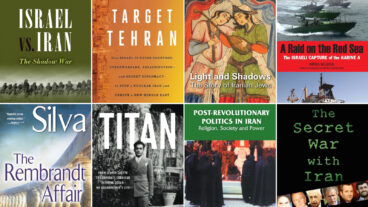Tzipi vs Bibi: The close race between Likud and Kadima was perhaps best illustrated by the front page of Israeli newspaper Maariv.Israeli voters may have appeared indecisive in the run-up to Israel’s elections for the 18th Knesset yesterday, but on the day itself, they made a clear swing towards the right.
With 99 percent of the votes for the 120 Knesset seats in by 10am this morning, the Kadima party, headed by Tzipi Livni, was in the lead with 28 seats, and Likud, headed by Benjamin Netanyahu, won 27. The election’s surprise dark horse Yisrael Beteinu, headed by Avigdor Lieberman, won 15 seats.
The remaining 50 seats went to Labor – 13; Shas – 11; United Torah Judaism – 5; Hadash – 4; United Arab List-Ta’al – 4; National Union – 4; Meretz – 3; Habayit Hayehudi – The New National Religious Party (NRP) – 3; Balad – 3.
The other small parties – the Green Party, Meimad-Green Movement, Pensioners, Israel Hazaka, Or, Green Leaf and Tzomet – did not pass the 2 percent minimum threshold and did not win any seats.
It still remains to be seen whether Livni or Netanyahu will be Israel’s next prime minister. This will depend on which party can create a majority coalition of at least 61 seats and form a government, in consultation with the President of the State of Israel Shimon Peres.
Israeli democracy in action
The election day weather was as changeable as voter sentiment. With 10-15 percent of voters still undecided on the eve of elections, there were concerns that many would not even bother coming to the polling stations in light of the storm that swept in overnight. These fears were allayed by 4pm in the afternoon when, despite the rain, 42% had already cast their ballots. By 6:15pm, almost 50% had voted and by 8pm almost 60%. In the end, voter turnout was strong with 65% of the country’s 5,278,985 eligible voters showing up at the polls – 2% more than in the previous election.
The close race between Likud and Kadima was perhaps best illustrated by newspaper Maariv’sfront page: split in half, playing card style, one part bore the headline, “The Next Prime Minister: Benjamin Netanyahu” and the other part read, “The Next Prime Minister: Tzipi Livni”.
But the real victor, as always, was Israel’s cacophonous democratic system, where small and large parties elected on the basis of proportional representation form coalitions to gain a majority of votes. This year, there were 33 parties up for election. The system – at least in theory – gives voice to minority sectors that might otherwise be ignored.
In practice, the inability to maintain coalitions has brought Israelis to the polls for the fifth time now in 10 years. To its great credit, balloting in the Middle East’s only true democracy went, as always, relatively smoothly with just the usual hiccups: the polling stations that moved location without notifying anyone; complaints by election monitors of damaged, missing and stolen ballot slips; the blind woman who was initially denied entry to her polling station (the situation was later rectified).
More seriously, there was unrest in the Arab town of Umm el-Fahm as residents protested the arrival of election monitors from the Jewish far right; street violence erupted and police made five arrests.
In the end, all of the country’s 9,263 polling stations were operational; of these 1,319 were wheelchair accessible, 194 were in hospitals, 56 in prisons and detention centers, 92 in Israeli embassies and consulates. The polls opened at 7am and closed at 10pm.
The lighter side of election day
Retailers were the winners by a landslide as election day in Israel is a vacation day; all workers have a day off except for those providing essential services where workers must be given time off to vote. On Tuesday, 47% of businesses were open, cafes and restaurants buzzing with activity and shops offering discounts of up to 70%. Israel’s malls benefited from both the holiday and the inclement weather with two and a half times the turnover of an ordinary weekday and movie houses filled to capacity.
Bad weather also meant that picnics in the park and out-of-town trips were out of the question and polling stations reportedly served as a rainy-day activity for parents trying to amuse the kids.
On the popular culture front, Google Israel created a special Election Day logo, Israeli music TV station Channel 24 ran a video hit list of the candidates’ favorite songs, and Channel 10 projected the initial election results for the major parties in red, green and blue on the three Azrieli Center towers.
Official election results will be tabulated and published next week on February 18. After that, the politicking begins in earnest as coalitions are formed. The opening session of 18th Knesset is scheduled for March 2.













